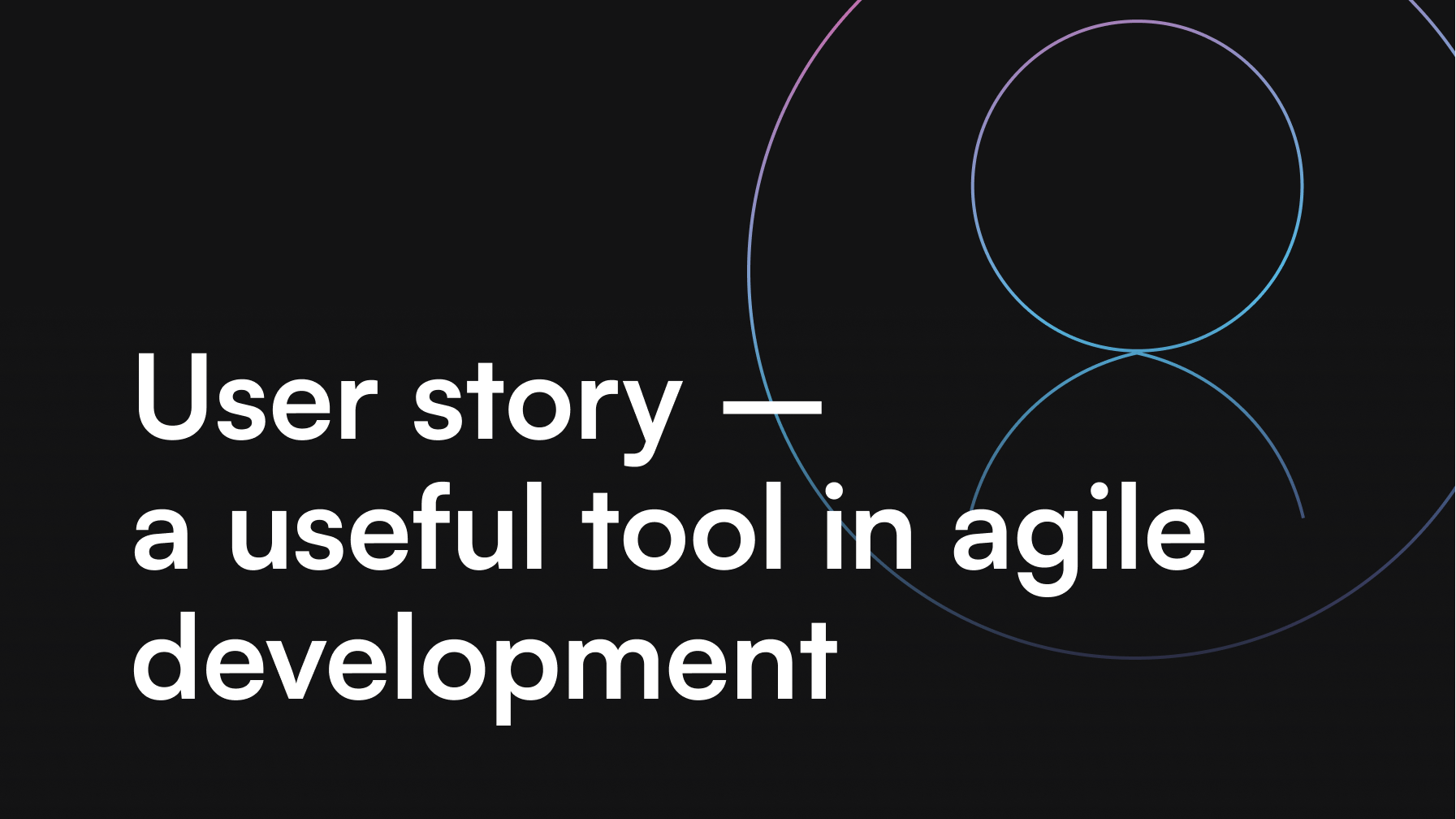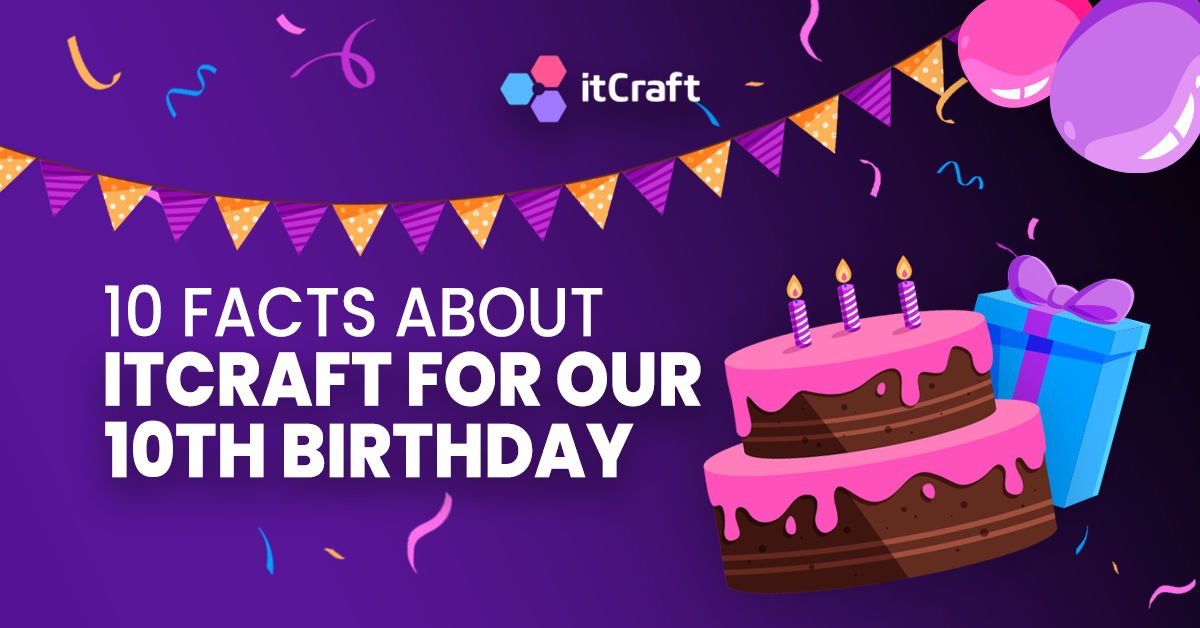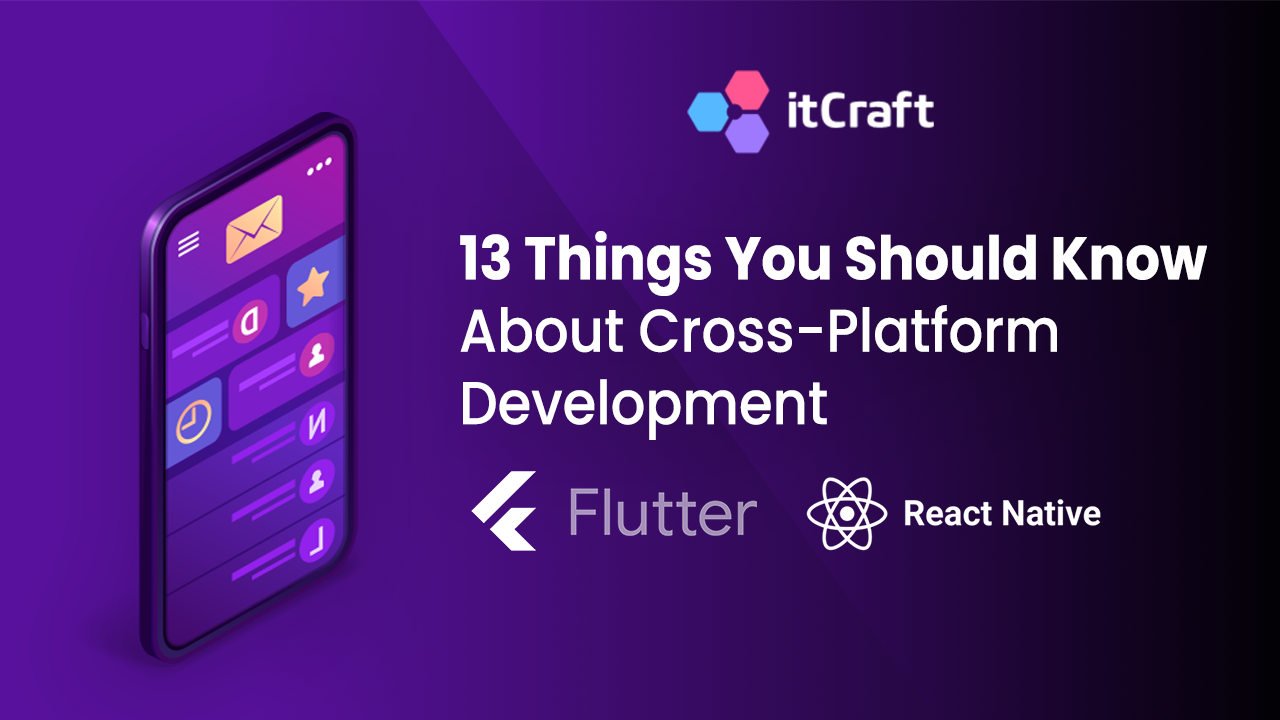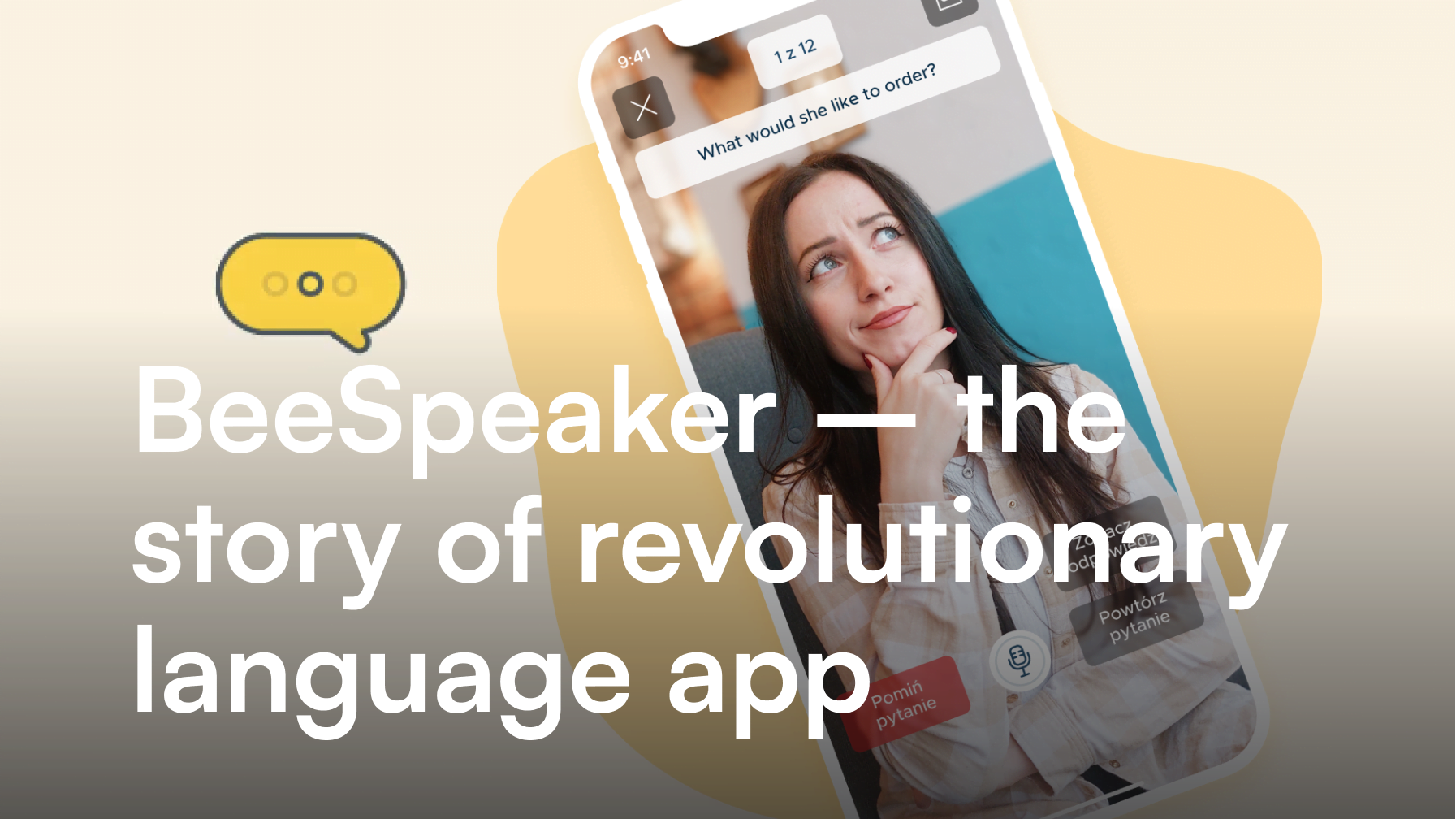Mobile software brief – what we need to know about your next mobile project

Karol Wegner

Jakub Turkowski
Intro
If you’re thinking about having your first (or second, or 31st) mobile app development, you will obviously need to know how much it’s going to cost. Unfortunately, “it depends” is the most common and at the same time the stupidest answer you will receive when trying to talk to developers about costs and estimates.
Common – because mobile app development actually does depend on so many different factors, that the word itself is just the easiest way to answer shortly. Stupid, because it leaves you with no real information at all. So, we need a good starting point to estimate a realistic budget. Also, a proper brief will help eliminate possible timeline issues, as well as support a smoother production cycle. If you don’t know the expectations and requirements, you have a poor overall reception. Mobile app development project is a complex process, and if you do not have mobile app brief template, this article will help you understand what should be included in mobile app development brief.
“It depends” is not the answer
And once they say it, you ask “Depends on what?”. What follows is usually a mix of sales techniques and trying to find out what your requirements are. We know that you have the app idea, we know that your product should be available in app stores. But we need more information to estimate the project budget for your new mobile application.
The process of proper estimation and preparing for it is crucial for your project’s success. It’s important for you as much as for the developer to do it right. You know, the development team needs to know on which mobile platform the app will run. Is it an Android app or iOS? Should it be a native app or cross-platform? That’s just the start, as a development partner, we have to further explore your idea. There is much more in the design process – namely, user interface, user interaction, app features, payment systems (if you need them), user registration. Ok, let’s not make things complicated and talk here about all the features. Let’s focus on what you should tell us in order to get much smoother production. Let’s go!
The real answer is not simple
We will try to make this process a little more substantial, and less of a sales pitch. Yes, we still want your business, but what we want most – is for you to be able to make an informed decision, whether you pick itCraft or another developer to work with. Of course, we are looking forward to our partnership, we are a reliable tech partner.
The below article is attempting to explain the “mobile application brief” as thoroughly and reader-friendly as possible, but if you have any comments or need more info, please let us know. Especially if anything is not clear enough, don’t hesitate to ask for detailed reference, request a chat about custom features or team consulting in any matter. We want this to be a help for anyone considering software development. Transforming the idea to monetizing product is important, however, identifying the potential users and estimating product market fit are vital. So, you can ask us about anything, anytime. It’s that simple, because we have the toward-people approach as a top development company.
Why do we need a software project brief?
It’s simple, like our simple app 🙂
The more we know about your idea, the better. Not because we want to steal it and sell to third party services company (no time to follow up on this stuff- we’re way too busy to do things for free) but because we want to help you succeed. To the best of our knowledge and ability. The knowledge bit, at least the major part of it, will come from you.
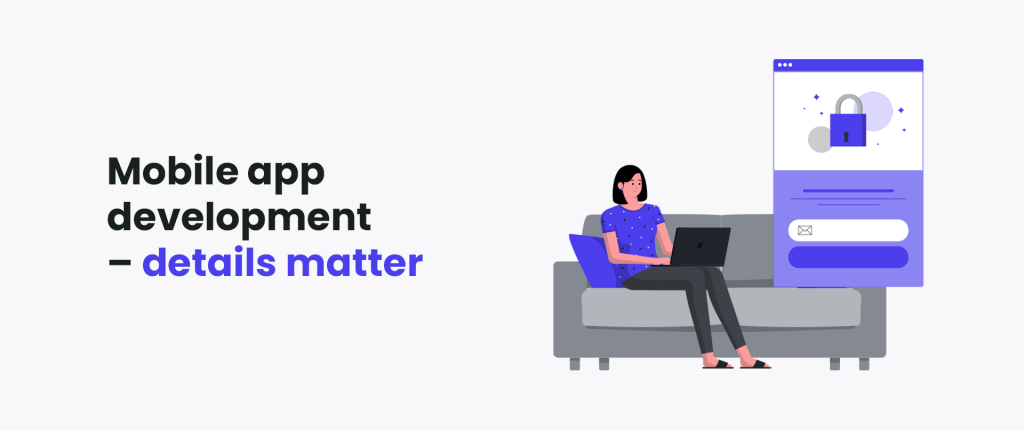
Actually, they are what matters most. If there’s anything that you should put the most effort into when preparing the brief, it’s the details. When we assess your requirements, meticulously gathered information will prove invaluable. Current mobile trends are one thing, but your app requires unique development approach to reach the desired target market. We need to know as much as possible – to estimate the workload and development costs, as well as to choose (along with you of course), the right platform for your app, important features, app design, etc. So without further ado, let’s talk about your next mobile app brief. It’s a bit of a read, but for one – we will try to make it as painless and brief as we can. 🙂
Secondly, if you manage to go through the whole thing we can guarantee you will have what’s needed to start looking for the right developer (and get your new app rolling).
Here’s what we need to know to estimate and plan your software development
The aim of the mobile app project
Why are you thinking of developing a mobile app? Understanding your idea and the reasoning behind it will help us choose the right technologies, adjust to your short- and/or long-term strategy and advise on the most efficient approach to develop an outstanding app. Sure, app name is also important (branding), but app requirements vary, as well as the needs of the target audience. So, tell us more about your app idea, and we will help you with the project brief.
Mobile app project – target audience and its problems
To provide adequate service software developers need to know the value you and your new app are giving to your users. Whether they are customers, the general public, or your own employees, the introduction of a new system aims at solving a problem, satisfying a need or bringing benefit to the end user. Understanding your value proposition and target audience of your app will help us design the right solution and use the technologies appropriate to your needs. It will also help us in terms of task management on our side (and early elimination of irrelevant steps). It is crucial to know or identify your target audience. Also, if you need a native app for particular mobile devices – mobile application on each platform has different limits and advantages. Thus, the native mobile development teams also vary. So, project brief is vital for the app development process. You see, app development project is a complex thing.
Mobile app development company – your resources, and needs
Define the current state of your project. Is it just an idea needing analysis and evaluation? Or maybe you are well past that and your project is already in the design phase? Do you have your own team already working on the project?
Once we know the answers to these, we can use the information to better assess the range of services you will require to develop your app. To put it simply – to have the mobile app brief. Basically, we would like to know:
- If you have a team of people responsible for the project? What roles are covered? Are you providing a dedicated Product Owner, or planning on overseeing the development yourself?
Our Product Owner’s guide will tell you more about the role. Second part here. Can you provide any business info, documentation, other knowledge on the problem your system will solve?
Are there specific guidelines for your proposed system regarding the vendor’s capacity, technologies, standards or processes the service provider (developer) should follow?
Having the above info, your future vendor will be able to quickly tell if they possess the required qualities, assets and resources to work on your project and deliver an astonishing app.
To get honest answers, ask honest questions
When providing the above information, or any other details in a brief, we recommend not to withhold any information/requirements you may have. If you miss an important detail, whether on purpose or accidentally, it can have significant consequences. Simply because something that may seem small and insignificant to you, may actually turn out to be a serious and complex issue for the developer.
For example, you forget to tell us that your app should have push notifications (these also have to be designed and implemented in the app) or that your app should also work offline (yes, mobile apps work in offline mode). This kind of misunderstanding, more often than not, leads to complications and conflict. Better to avoid that from the start.
Mobile apps description – main functions and features
In this crucial part of the brief, you will be describing tasks and processes the end users will fulfill using your app. In other words – what is your app supposed to do? First, you need to define the types of users your app will have – admin, client, provider (in the Uber system it’s the admin, passenger, driver). Then for each of them, you need to outline the functionalities they will be able to access.
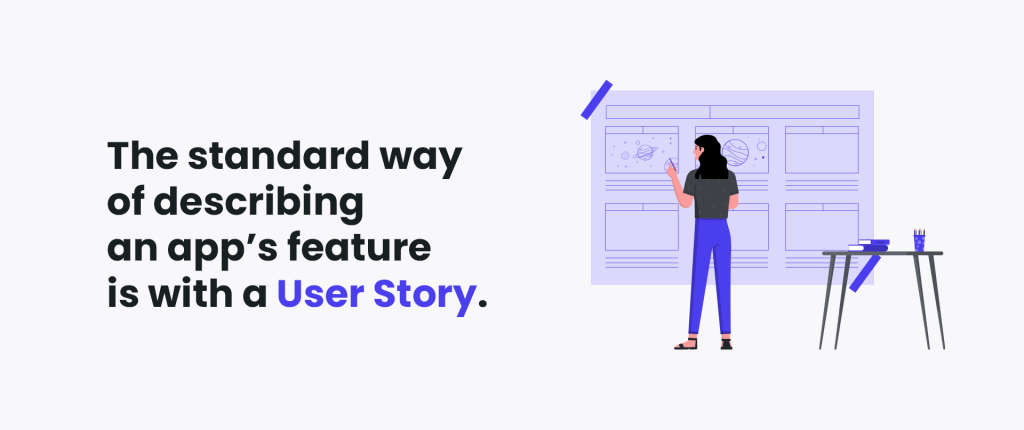
User story
The standard way of describing an app’s feature is with a User Story. Usually in the following form: As a < type of user >, I want < some goal > so that < some reason >, the Stories tell us who (user), how (the goal) and why (reason) will utilize a particular function. This information is the base for both the UX designers and developers to plan and estimate the time and technologies required to develop a feature.
Examples of user stories
As a <general user> I want to <log in to the app> so that <I can use its main features>
or
As an <system admin> I want to <manage user accounts> so that <I can modify, adjust, delete and create new user accounts>
Components and scope of works
Every app/system can be broken down into 2 parts:
1. Components that need to be developed,
2. Work to be done.
The main components of a system/application are as follows:
- Android mobile app – app dedicated for Android devices only,
- iOS mobile app – iPhone app,
- Backend application – the server solution containing a database and/or a Programming Interface (API),
- Web admin panel – admin app for system administrators,
- A web app for end users – a browser-based application,
- Integration with 3rd party services – external systems, APIs,
- A landing page – website with information about the project.
Depending on the complexity and your preference, your project will require all or only some of these components. Most up-to-date developers suggest starting with an MVP of your system.
Additionally, the project can be defined by outlining the scope of required work and the effecting deliverables.
- UX/UI design – preparing the backlog of requirements, hi-fi and lo-fi mockups, prototype,
- App implementation (development of Android, iOS, web, backend, API etc…),
- QA – testing process including acceptance, security, efficiency, performance, automatic, unit, alfa and beta testing (and user tests for good measure),
- Preparing project documentation (specification, technical, functional, test scenarios, API, integration),
- Transfer of Intellectual Property (IP) – source code or a licensing solution,
- Google Play and App Store implementation,
- Project management – client provided when hiring the development team only or supplied by the developer when covering the project as a whole,
- After service – maintenance and further development once the project is completed.
The timeframe and deadlines
The time is always of the essence. If you need your app launched by a certain date, then your developer must know that as early as possible. Knowing how much time we have will let us adjust the size of the team to your requirements, but also let you know if the timeframe is feasible. There’s only so much a developer can do, and some crazies out there still claim you can actually get 9 ladies to deliver a baby 1 month from conception. Down here on earth we still work on “doing best we can” basis.
If you’re not on a tight schedule, this will also prove valuable information. Being able to take our time will bring down the price of your project. We need to prioritize features, do the app design, ensure the consistency remains high, prepare documentation (in written format), identify users, test how it works on the platform – there are many actions to be done, before youe app will be released.
Development process – the money question
The purpose of your investment in a new IT solution (or an existing one) is to reach the goal(s) outlined in your application’s brief. Investment can’t succeed without a budget.
As software development is a largely creative process with many variables in terms of solutions, technologies, time, etc., knowing the budget will allow the developers to adjust their proposition to your budgetary requirements.
Once they know how much you are planning to invest in the project, mobile app developers can offer the most suitable solution. Without this knowledge, they will be forced to estimate “blind” which usually means offering the cheapest and lowest quality options in order to be competitive with other providers. The resulting estimates are usually largely inadequate and inaccurate. Worst case scenario, you will end up actually paying for a botched service or receive a piece of software that will require months of bug fixing and cleaning up by a different provider. Most app development companies usually refuse this type of assignment, as experience has taught us that fixing someone else’s mistakes is both painful and expensive. Besides, our technical analysts usually tell us that “it will be cheaper to make a new one than fix this bag of …”.
Clearly stating your budgetary requirements is the best way to finding the right app development company. The best way to disclose it is by telling us “We are thinking to spend X amount on this project, and we definitely don’t want to go over the Y amount”. This will let us propose a solution to satisfy the X requirement and an expanded one that will come closer to the Y sum.
We also prepared an article about fixed-price vs time and material as well as you may check our pricing to find out how much does it cost to develop an app.
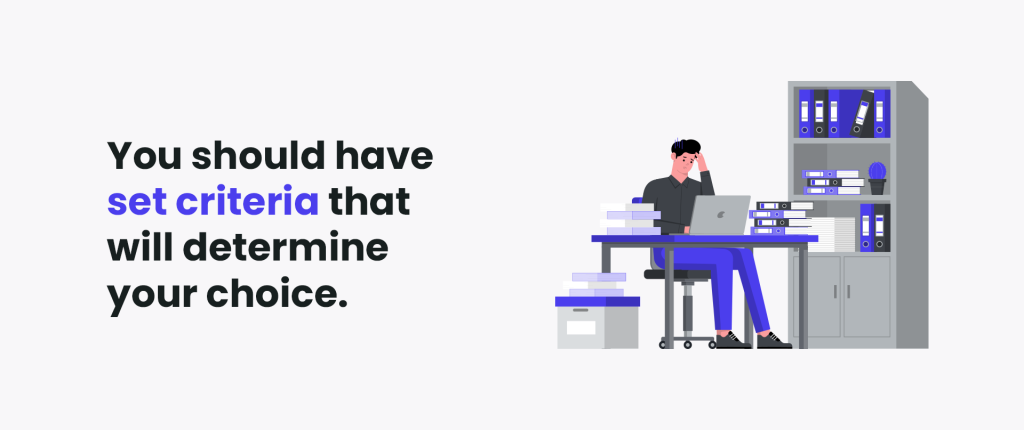
Choosing the developer for development project
When looking for a good app developer, you should have set criteria that will determine your choice. This will give you a clear picture of the company you will be most likely to partner with. Stating this openly and honestly in the initial stages of your search will also save you the time on negotiating with vendors that cannot meet your needs.
How our clients choose mobile development company
Below you will find three most common vendor characteristics our clients look at when making their decision. All these are valid and equally important, although we can tell from experience that no one vendor is capable of providing services that will satisfy all of them.
Take this as a tip – If a developer tells you they can “do it all”, they are most likely not worth your trust, or should at least be thoroughly checked.
- The price – if you’re a startup or have a very limited budget (the two go together quite often) you will obviously be looking for the cheapest possible option. Established businesses usually look for long-term partnerships and the price is a secondary issue. Mutual trust, experience, and support play a more significant part,
- Deadlines – some solutions require adhering to strict timeframes. If you require a development team ASAP then developers offering service at short notice are the way to go,
- Quality – vendors offering high quality are currently most sought for in the market. Whether it’s the perfect UX/UI design to please the users, clean code, reliability, efficiency or all these put together – finding a mobile developer by this measure seems to be the most popular, and yielding best results in terms of ROI.
Which of the above will drive your decision depends on your business’ needs, capabilities and requirements. It’s also a good idea to inform the developers about your priorities so they can better adjust their offer and estimate.
Updating your brief
When contacting various developers you will find that they answer with requests for additional details, clarifications, etc… It is good to include answers to these in your brief, so the next developer you ask has an even clearer and more detailed picture of your idea. All the more important is to update any changes to your requirements that you come up with while looking for a suitable vendor. So you see now, why project briefs are so important.
Here you can find itCraft’s brief!
Learn more about developing your own app – contact us!

